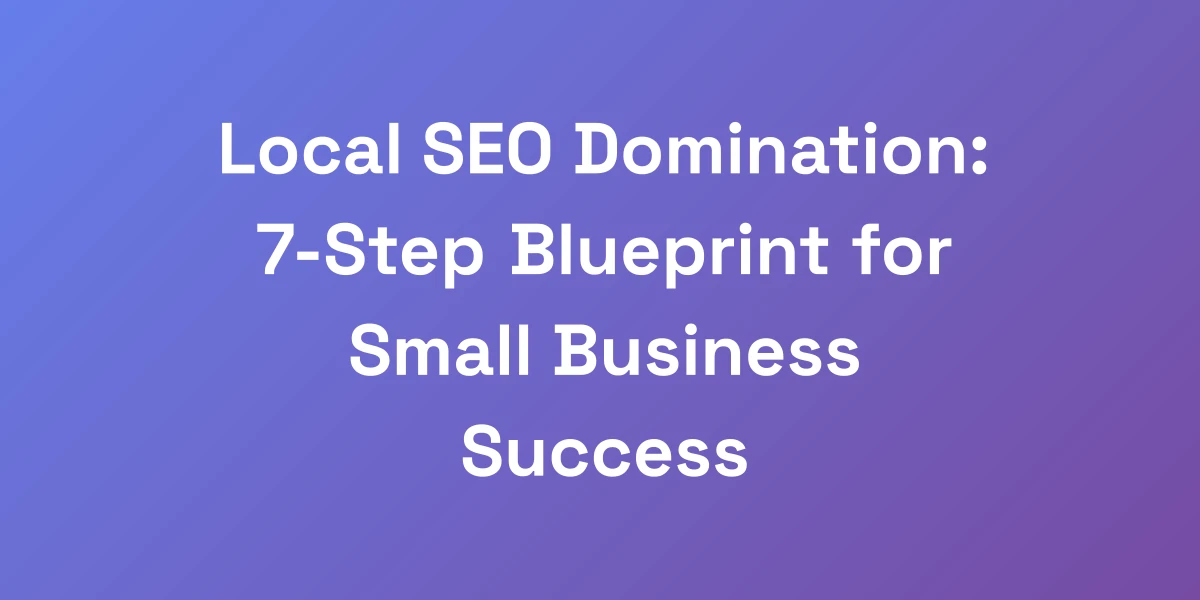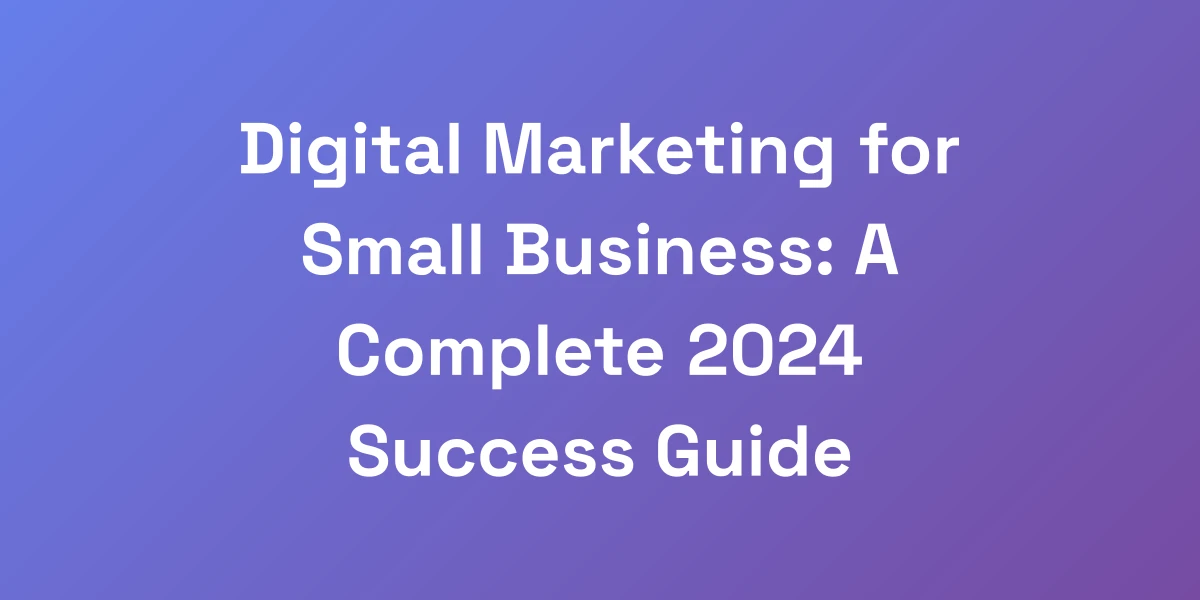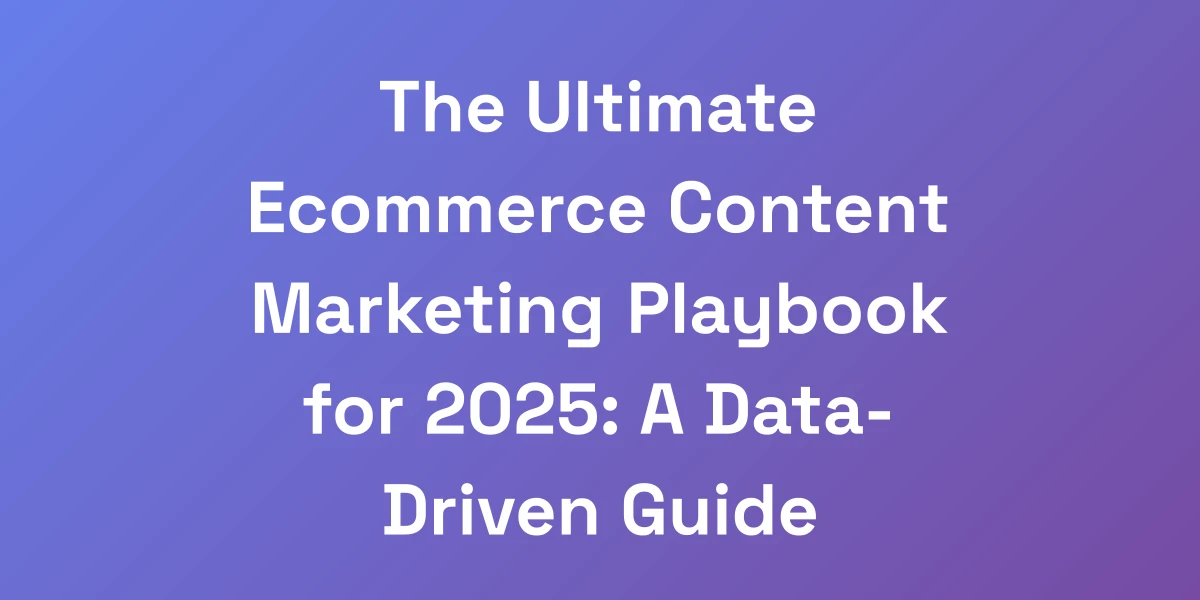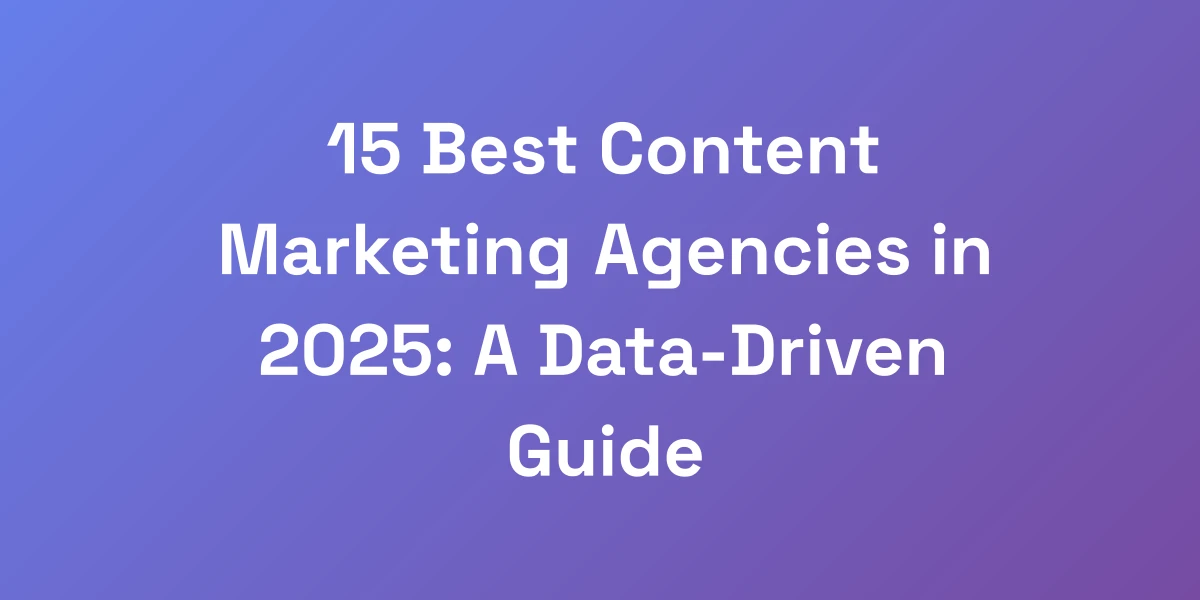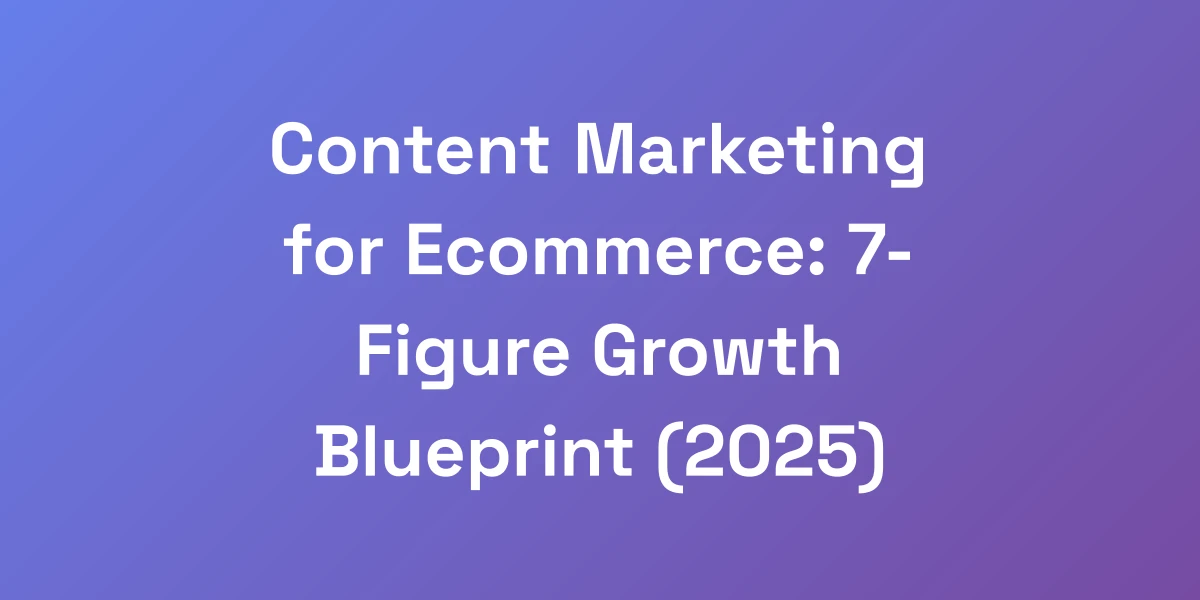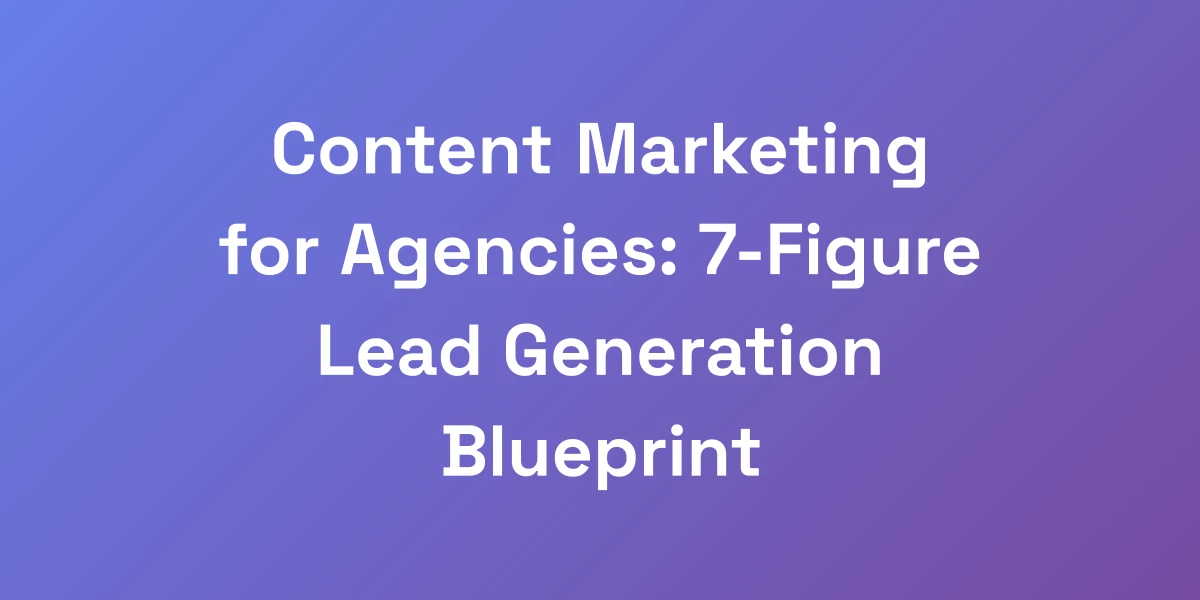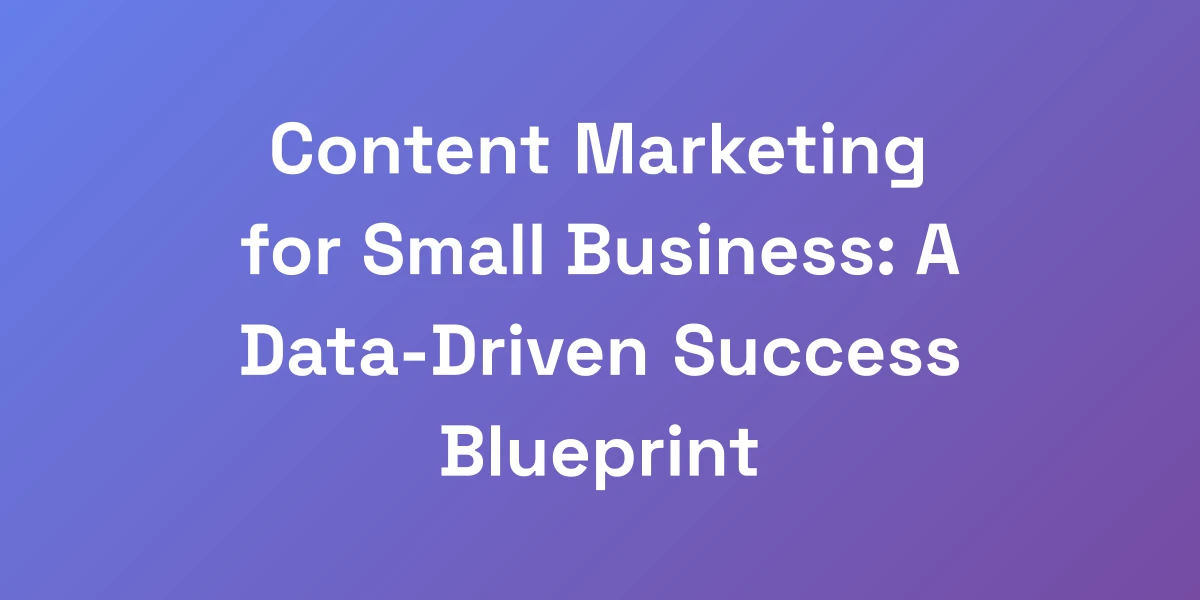
Content Marketing for Small Business: A Data-Driven Success Blueprint
Feb 21, 2025 | By [email protected]
Introduction
In the bustling realm of small businesses, standing out is more than a mere aspiration—it’s a necessity. We’ve all witnessed content marketing transform from a supplementary strategy into a cornerstone of business growth.
Yet, many small businesses grapple with the complexities of crafting content that not only attracts but also converts. The landscape has shifted; it’s no longer about producing content haphazardly and hoping for the best. Instead, it demands a data-driven approach that aligns with both business objectives and audience needs.
Challenges abound: limited resources, fierce competition, and the ever-evolving digital ecosystem can make effective content marketing seem daunting. However, by leveraging the right strategies and tools, small businesses can turn these challenges into opportunities.
This blueprint delves deep into the intricacies of content marketing tailored specifically for small enterprises. We’ll explore how to build a strategic foundation, identify high-impact content types, optimize resources, and measure success with precision. Let’s embark on a journey to transform your content marketing efforts into a powerful engine for growth.
Understanding the New Content Marketing Landscape for Small Businesses
In today’s digital ecosystem, content marketing has evolved beyond simple blogging. For small businesses, it’s no longer about creating random content and hoping for results. Instead, it’s about building a systematic, data-driven approach that generates measurable ROI.
Modern content marketing combines strategic thinking with tactical execution, allowing small businesses to compete effectively against larger competitors while maximizing limited resources. The key lies in understanding how to leverage content as a business asset rather than treating it as a mere marketing activity.
The Evolution of Small Business Content Marketing in 2025
Content marketing has undergone significant transformations over the past few years. In 2025, small businesses are embracing sophisticated tools and technologies to enhance their content strategies.
AI-powered tools, like those highlighted by Semrush, are revolutionizing how small businesses approach content creation and optimization. With 68% of businesses seeing an increase in ROI due to AI usage, the integration of these technologies is no longer optional but essential.
Additionally, the shift towards personalized and interactive content has redefined customer engagement. Small businesses are now leveraging multimedia formats—such as videos and interactive infographics—to capture and retain audience interest effectively.
For example, a local bakery might use video content to showcase the baking process, creating a more engaging and authentic connection with customers compared to traditional blog posts. This evolution signifies a broader trend where content is crafted not just for visibility but for meaningful interaction and conversion.
Why Traditional Content Marketing Advice Falls Short
Traditional content marketing advice often emphasizes volume over quality, urging businesses to churn out as much content as possible. However, this approach can be counterproductive for small businesses with limited resources.
We’ve observed that generic advice fails to address the unique challenges and opportunities that small businesses face. Without a tailored strategy, efforts can become scattered, leading to inconsistent messaging and wasted resources.
Moreover, traditional advice typically lacks the focus on data-driven decision-making. In a world where data is king, small businesses need strategies that are informed by actionable insights rather than broad, one-size-fits-all guidelines.
Instead, we advocate for a more strategic approach—one that prioritizes quality, relevance, and measurable outcomes. By aligning content with specific business goals and leveraging data to guide decisions, small businesses can create more impactful and sustainable content marketing efforts.
The ROI Perspective: Making Every Content Piece Count
Understanding and maximizing the return on investment (ROI) is crucial for small businesses where every dollar counts. Each piece of content should be viewed not just as a marketing asset, but as a potential revenue generator.
According to Semrush, marketers who utilize AI experience an average of a 70% increase in ROI. This statistic underscores the importance of integrating intelligent tools to optimize content performance and efficiency.
To make every content piece count, we recommend the following strategies:
- Set Clear Objectives: Define what each piece of content aims to achieve, whether it’s brand awareness, lead generation, or customer retention.
- Leverage Analytics: Use tools like Google Analytics to track performance and adjust strategies based on data-driven insights.
- Focus on High-Impact Content: Prioritize content types that offer the highest return, such as evergreen content and video marketing.
- Repurpose Content: Extend the lifespan and reach of your content by repurposing it across different formats and platforms.
By adopting a ROI-centric approach, small businesses can ensure that their content marketing efforts are not only effective but also financially sustainable.
Understanding Your Content Marketing Ecosystem
A well-rounded content marketing ecosystem is the backbone of a successful strategy. This ecosystem includes the tools, platforms, and processes that support content creation, distribution, and analysis.
Building a robust ecosystem involves:
- Content Management Systems (CMS): Platforms like WordPress and Wix offer the flexibility and scalability needed for small businesses to manage their content efficiently.
- Analytics Tools: Tools such as Google Analytics and Semrush provide invaluable insights into content performance and audience behavior.
- Automation Tools: Automation tools such as AutoSEO help streamline repetitive tasks, allowing teams to focus on strategic initiatives. The adoption of AI tools has increased by nearly 50% from 2023 to 2024, highlighting their growing importance in content marketing.
- Collaboration Platforms: Platforms like Trello or Asana facilitate seamless collaboration among team members, ensuring that content projects stay on track.
Understanding and optimizing your content marketing ecosystem is essential for creating a harmonious and efficient content marketing strategy that can adapt to changing demands and opportunities.
Setting Realistic Expectations and Timelines
Setting realistic expectations is fundamental to maintaining motivation and achieving long-term success in content marketing. For small businesses, it’s crucial to establish achievable goals and timelines that align with available resources.
Here are some actionable steps:
- Define Milestones: Break down your content marketing strategy into manageable milestones. This could be based on content volume, engagement rates, or conversion goals.
- Allocate Resources Wisely: Determine how much time and budget you can realistically dedicate to content marketing. Focus on high-impact activities that offer the best returns.
- Monitor Progress: Regularly review your progress against set milestones. Use analytics tools to track performance and make necessary adjustments.
- Stay Flexible: Be prepared to adapt your strategies based on performance data and changing market conditions.
By setting realistic expectations and adhering to well-defined timelines, small businesses can sustain their content marketing efforts without overwhelming their resources.
Creating Your Strategic Content Foundation
Before diving into content creation, smart small businesses need to build a solid strategic foundation. This involves more than just identifying target audiences—it requires deep market analysis, competitive positioning, and clear goal setting.
Your content strategy should act as a bridge between your business objectives and your audience’s needs. Think of it as creating a content operating system that guides all your marketing decisions and ensures every piece of content serves a specific purpose in your business growth.
Conducting an Effective Content Audit
A content audit is the first step in understanding what you currently have and what needs improvement. It provides a clear picture of your existing content’s performance and identifies gaps that need to be filled.
Steps to conduct a thorough content audit:
- Inventory Your Content: List all existing content pieces, including blog posts, videos, social media posts, and any other content formats.
- Assess Performance: Use analytics tools to evaluate the performance of each piece based on metrics such as traffic, engagement, and conversions.
- Identify Gaps: Determine areas where content is lacking or could be improved. Look for topics that resonate with your audience but are underrepresented in your current strategy.
- Prioritize Content: Decide which content pieces to keep, update, repurpose, or discard based on their performance and relevance to your goals.
An effective content audit helps in refining your strategy by focusing on what works and eliminating what doesn’t, ensuring that every content effort contributes to your business objectives.
Defining Your Content Marketing Goals
Clear and measurable goals are essential for guiding your content marketing efforts. They provide direction and a benchmark for evaluating success.
To define your goals:
- Align with Business Objectives: Ensure that your content goals support your overall business objectives, such as increasing sales, enhancing brand awareness, or expanding your customer base.
- Make Them SMART: Goals should be Specific, Measurable, Achievable, Relevant, and Time-bound. For example, “Increase website traffic by 30% in the next six months.”
- Focus on Key Metrics: Identify which metrics will best indicate progress towards your goals. These could include website traffic, lead generation, conversion rates, or social media engagement.
- Prioritize Goals: Determine which goals are the most critical and prioritize your content efforts accordingly.
By clearly defining your content marketing goals, you establish a roadmap that guides every content decision, ensuring that each piece of content is purpose-driven and impactful.
Mapping Your Customer’s Content Journey
Understanding your customer’s journey is pivotal in creating content that resonates and drives action. Mapping this journey involves identifying the stages your customers go through, from awareness to decision-making.
The typical stages include:
- Awareness: The customer becomes aware of a problem or need.
- Consideration: The customer evaluates different solutions.
- Decision: The customer makes a purchase decision.
For each stage, create content that addresses the specific needs and questions of your audience:
- Awareness Stage: Educational blog posts, infographics, and social media content that highlight the problem and introduce potential solutions.
- Consideration Stage: In-depth articles, comparison guides, and case studies that showcase your product or service as the optimal solution.
- Decision Stage: Testimonials, detailed product descriptions, and special offers that encourage conversion.
By aligning your content with each stage of the customer journey, you ensure that your messaging is relevant and timely, effectively guiding your audience towards making informed decisions.
Creating Your Content Value Proposition
A strong content value proposition (CVP) differentiates your content from competitors and clearly communicates the unique benefits you offer.
To develop your CVP:
- Identify Your Unique Selling Points: Determine what sets your business apart. This could be your expertise, customer service, or unique product features.
- Understand Your Audience’s Needs: Ensure your content addresses the specific needs, pain points, and preferences of your target audience.
- Communicate Clear Benefits: Clearly articulate the benefits your audience will gain from engaging with your content and, consequently, your business.
- Consistency is Key: Ensure that your CVP is consistently reflected across all content pieces, maintaining a cohesive brand voice and message.
A compelling CVP not only attracts your target audience but also builds trust and authority, positioning your business as a valuable resource in your industry.
Building Your Content Distribution Framework
Creating great content is only half the battle; effectively distributing it ensures that it reaches and engages your intended audience.
A robust content distribution framework includes:
- Identify Distribution Channels: Determine which platforms are most frequented by your target audience. Common channels include your website, social media, email newsletters, and third-party platforms.
- Optimize for Each Channel: Tailor your content format and messaging to suit each distribution channel. For instance, a blog post might be repurposed into a series of social media updates or a video.
- Leverage SEO: Optimize your content for search engines to enhance visibility and drive organic traffic.
- Implement a Content Calendar: Schedule your content distribution to ensure consistent and timely delivery across all channels.
- Engage with Your Audience: Actively interact with your audience on each platform, responding to comments, addressing questions, and fostering community engagement.
By establishing a clear content distribution framework, small businesses can maximize the reach and impact of their content, ensuring that it effectively contributes to their marketing goals.
High-Impact Content Types for Small Business Success
Not all content types deliver equal results for small businesses. The key is to focus on high-leverage content formats that provide maximum impact with minimal resource investment. This means selecting content types that can be repurposed, automated, and scaled effectively.
Modern small businesses need to think beyond traditional blog posts and explore multimedia formats that resonate with their specific audience while maintaining manageable production costs.
Evergreen Content That Drives Long-Term Traffic
Evergreen content remains relevant and valuable over time, continuously attracting traffic and engagement.
Examples include:
- How-To Guides: Step-by-step instructions that address common problems or questions in your industry.
- Resource Lists: Comprehensive compilations of tools, tips, or best practices that your audience can refer to repeatedly.
- FAQ Pages: Detailed answers to frequently asked questions, enhancing user experience and SEO.
By investing in evergreen content, small businesses can ensure a steady stream of traffic and engagement, providing sustained value to their audience without the need for constant updates.
Short-Form Content for Quick Wins
Short-form content, such as social media posts, infographics, and brief blog posts, can deliver quick wins by capturing immediate attention and driving engagement.
Benefits of short-form content:
- Quick Production: Easier and faster to create, allowing for frequent updates and interactions.
- High Shareability: More likely to be shared on social media, increasing reach and visibility.
- Engagement Boost: Short, impactful content can quickly engage your audience and prompt immediate responses.
For instance, a short how-to video on Instagram or a quick tip shared on Twitter can drive immediate traffic and foster engagement without requiring extensive resources.
Video Content on a Small Business Budget
Video content has become a dominant force in content marketing, offering high engagement and conversion potential. However, many small businesses worry about the costs associated with video production.
Fortunately, there are cost-effective ways to create impactful video content:
- Use Smartphones: Modern smartphones have high-quality cameras that can produce professional-looking videos without the need for expensive equipment.
- Leverage Free Editing Tools: Tools like iMovie, DaVinci Resolve, and Canva offer free or low-cost video editing capabilities.
- Create Animated Videos: Simple animations can effectively communicate your message without the complexity of live-action filming.
- Incorporate User-Generated Content: Encourage your customers to create and share videos featuring your products or services.
By adopting these strategies, small businesses can harness the power of video content without breaking the bank, enhancing their marketing efforts and audience engagement.
User-Generated Content Strategies
User-generated content (UGC) involves leveraging content created by your customers or audience, providing authenticity and trust.
Effective UGC strategies include:
- Customer Testimonials: Showcase positive experiences from your customers to build credibility and trust.
- Social Media Hashtags: Create branded hashtags that encourage customers to share their experiences and stories.
- Contests and Challenges: Run campaigns that motivate your audience to create and share content related to your brand.
- Feature Customer Stories: Highlight individual customer journeys and success stories on your website or social platforms.
UGC not only provides fresh and diverse content but also fosters a sense of community and loyalty among your customers.
Content Repurposing Techniques
Repurposing content involves transforming existing content into different formats to extend its reach and lifespan.
Common repurposing techniques:
- Convert Blog Posts to Videos: Transform written content into engaging videos for platforms like YouTube or social media.
- Create Infographics: Visualize data or key points from blog posts or reports to make the information more digestible.
- Develop E-books or Guides: Compile a series of related blog posts into comprehensive e-books or guides for deeper engagement.
- Share on Different Platforms: Adapt content for various social media platforms, tailoring the format and message to suit each audience.
By repurposing content, small businesses can maximize their content output without the need for constant original creation, ensuring a consistent and varied content stream.
Implementation and Resource Optimization
For small businesses, efficient implementation is crucial. This section focuses on practical systems and workflows that make content marketing manageable and sustainable. We’ll explore how to create a lean content production system that maximizes output while minimizing resource drain.
The goal is to build repeatable processes that can be executed consistently, even with limited time and budget.
Building a Lean Content Creation Process
A lean content creation process emphasizes efficiency and effectiveness, ensuring that each step adds value without unnecessary complexity.
Steps to build a lean process:
- Standardize Procedures: Develop standard operating procedures for content creation, approval, and publishing to streamline workflows.
- Prioritize Tasks: Focus on high-impact activities that align with your strategic goals, minimizing time spent on low-value tasks.
- Implement Agile Practices: Adopt agile methodology principles, such as iterative development and continuous feedback, to enhance flexibility and responsiveness.
- Eliminate Waste: Identify and remove any steps or processes that do not contribute directly to your content goals.
By implementing a lean content creation process, small businesses can produce high-quality content consistently while conserving valuable resources.
Tools and Technology for Efficiency
Leveraging the right tools and technologies can significantly enhance efficiency and productivity in content marketing.
Essential tools include:
- Content Management Systems (CMS): Platforms like WordPress, Wix, and Squarespace offer robust features for managing and publishing content.
- SEO Tools: Tools such as Semrush and Ahrefs assist in keyword research, competitor analysis, and performance tracking.
- Project Management Tools: Tools like Trello or Asana help organize and track content projects, ensuring deadlines are met.
- Graphic Design Tools: Canva provides user-friendly design capabilities for creating visually appealing content.
- Automation Tools: Platforms like AutoSEO and Zapier automate repetitive tasks, allowing teams to focus on strategic initiatives.
Investing in these tools can streamline content marketing processes, reduce manual effort, and improve overall productivity.
Content Calendar Management
A well-managed content calendar ensures that your content is produced and published consistently, aligning with your strategic goals and audience needs.
To effectively manage your content calendar:
- Plan Ahead: Schedule content topics and publication dates in advance to maintain a steady flow of content.
- Assign Responsibilities: Clearly define roles and responsibilities for each team member involved in content creation and publishing.
- Incorporate Flexibility: Allow room for spontaneous content that addresses current trends or unexpected opportunities.
- Use Calendar Tools: Utilize tools like Google Calendar, Trello, or specialized content calendar software to organize and visualize your schedule.
A structured content calendar helps in maintaining consistency, meeting deadlines, and ensuring that your content aligns with your marketing objectives.
Quality Control Systems
Maintaining high-quality content is essential for building trust and authority with your audience. Implementing quality control systems ensures that every piece of content meets your standards.
Key components of quality control include:
- Editorial Guidelines: Establish clear guidelines for tone, style, formatting, and content accuracy to maintain consistency across all content.
- Review and Approval Processes: Implement multiple layers of review, including proofreading and fact-checking, to ensure content accuracy and quality.
- Training and Development: Provide ongoing training for your content team to enhance their skills and stay updated with industry best practices.
- Feedback Mechanisms: Encourage feedback from team members and readers to identify areas for improvement and refine your content strategy.
By enforcing strict quality control measures, small businesses can produce reliable and professional content that resonates with their audience and fosters trust.
Resource Allocation Strategies
Effectively allocating resources ensures that your content marketing efforts are sustainable and impactful.
Strategies for optimal resource allocation:
- Identify Core Competencies: Focus on areas where your team excels, leveraging strengths to maximize content quality and effectiveness.
- Outsource When Necessary: For tasks that require specialized skills or additional capacity, consider outsourcing to freelancers or agencies.
- Prioritize High-Impact Activities: Allocate more resources to content types and channels that offer the highest returns.
- Monitor and Adjust: Regularly review resource allocation to ensure it aligns with your evolving content strategy and business goals.
By strategically allocating resources, small businesses can enhance their content marketing efficiency and effectiveness, ensuring that every effort contributes to their growth objectives.
Measuring and Scaling Your Content Success
Success in content marketing requires careful measurement and strategic scaling. Small businesses need to focus on tracking meaningful metrics that directly correlate with business objectives.
This means moving beyond vanity metrics to measure actual business impact and ROI. We’ll explore how to set up measurement systems that provide actionable insights and guide future content decisions.
Key Performance Indicators for Small Business Content
Identifying the right Key Performance Indicators (KPIs) is crucial for measuring the effectiveness of your content marketing efforts.
Essential KPIs include:
- Website Traffic: Measures the number of visitors to your site, indicating the reach and visibility of your content.
- Engagement Metrics: Includes likes, shares, comments, and time spent on content, reflecting audience interaction and interest.
- Conversion Rates: Tracks the percentage of visitors who complete desired actions, such as making a purchase or signing up for a newsletter.
- Lead Generation: Measures the number of new leads generated through your content, indicating its effectiveness in attracting potential customers.
- SEO Performance: Monitors keyword rankings, backlinks, and organic traffic growth, highlighting the impact of your SEO efforts.
Focusing on these KPIs allows small businesses to assess the true impact of their content marketing and make informed decisions to enhance performance.
Analytics Tools and Dashboards
Utilizing analytics tools and dashboards is essential for tracking and visualizing your content marketing performance in real-time.
Recommended tools include:
- Google Analytics: Provides comprehensive insights into website traffic, user behavior, and conversion metrics.
- Semrush: Offers advanced SEO analytics, competitor analysis, and performance tracking features.
- HubSpot: Combines marketing, sales, and service analytics, offering a holistic view of your content performance.
- Tableau: A powerful data visualization tool that helps in creating interactive dashboards and reports.
These tools enable small businesses to monitor their KPIs effectively, identify trends, and make data-driven adjustments to their content strategies.
Content ROI Calculation Methods
Calculating ROI in content marketing involves determining the financial return generated by your content compared to the investment made.
Steps to calculate content ROI:
- Define Investment: Calculate the total cost of your content marketing efforts, including creation, distribution, and tool expenses.
- Measure Returns: Identify the revenue generated directly or indirectly from your content, such as sales attributed to content-driven leads.
- Use the ROI Formula: ROI = (Return – Investment) / Investment x 100
For example, if you invest $1,000 in a content campaign and generate $3,000 in revenue from it, your ROI would be 200%.
Another approach is to track specific KPIs that correlate with revenue, such as lead quality and conversion rates, to estimate the financial impact of your content.
By accurately calculating ROI, small businesses can assess the effectiveness of their content marketing efforts and justify future investments.
Scaling Successful Content Strategies
Once you’ve identified which content strategies yield the best results, scaling them ensures continued growth and increased impact.
Strategies for scaling include:
- Increase Content Volume: Produce more of the high-performing content types that resonate with your audience.
- Expand Distribution Channels: Utilize additional platforms to reach a broader audience, leveraging the success of your current channels.
- Automate Processes: Implement automation tools to handle repetitive tasks, freeing up time for strategic initiatives. Try AutoSEO
- Invest in Team Growth: Expand your content team or outsource to professionals who can maintain and enhance your content quality as you scale.
By scaling successful strategies, small businesses can amplify their content marketing efforts, driving greater engagement and revenue growth.
Continuous Improvement Framework
A continuous improvement framework ensures that your content marketing strategy evolves and adapts to changing trends and audience preferences.
Components of this framework include:
- Regular Audits: Conduct periodic content audits to assess performance and identify areas for enhancement.
- Feedback Loops: Collect feedback from your audience and team to gain insights into content effectiveness and areas of improvement.
- Iterative Testing: Implement A/B testing and other experimental methods to refine content strategies and optimize results.
- Stay Updated: Keep abreast of industry trends and emerging technologies to ensure your content remains relevant and competitive.
By embracing a culture of continuous improvement, small businesses can ensure their content marketing strategies remain dynamic, effective, and aligned with their long-term objectives.
Conclusion
Content marketing stands as a formidable tool for small businesses aiming to carve out their niche in a competitive market. By adopting a data-driven approach, we can transform content from a simple marketing activity into a strategic business asset.
From establishing a solid strategic foundation and selecting high-impact content types to optimizing resources and meticulously measuring success, every aspect plays a pivotal role in ensuring that your content efforts yield tangible results.
Embracing technologies like AI and leveraging insights from industry benchmarks equip small businesses with the tools needed to maximize their ROI and scale their content strategies effectively.
We invite you to take the next step in elevating your content marketing. Begin by conducting a comprehensive content audit and setting clear, actionable goals that align with your business objectives. Engage with your audience meaningfully, track your progress meticulously, and continually refine your strategies to stay ahead.
Ready to transform your content marketing efforts into a powerhouse of growth? Start implementing these strategies today and witness your small business thrive in the digital landscape.
What challenges have you faced in your content marketing journey, and how have you overcome them? Share your experiences and insights in the comments below—we’d love to hear from you!
